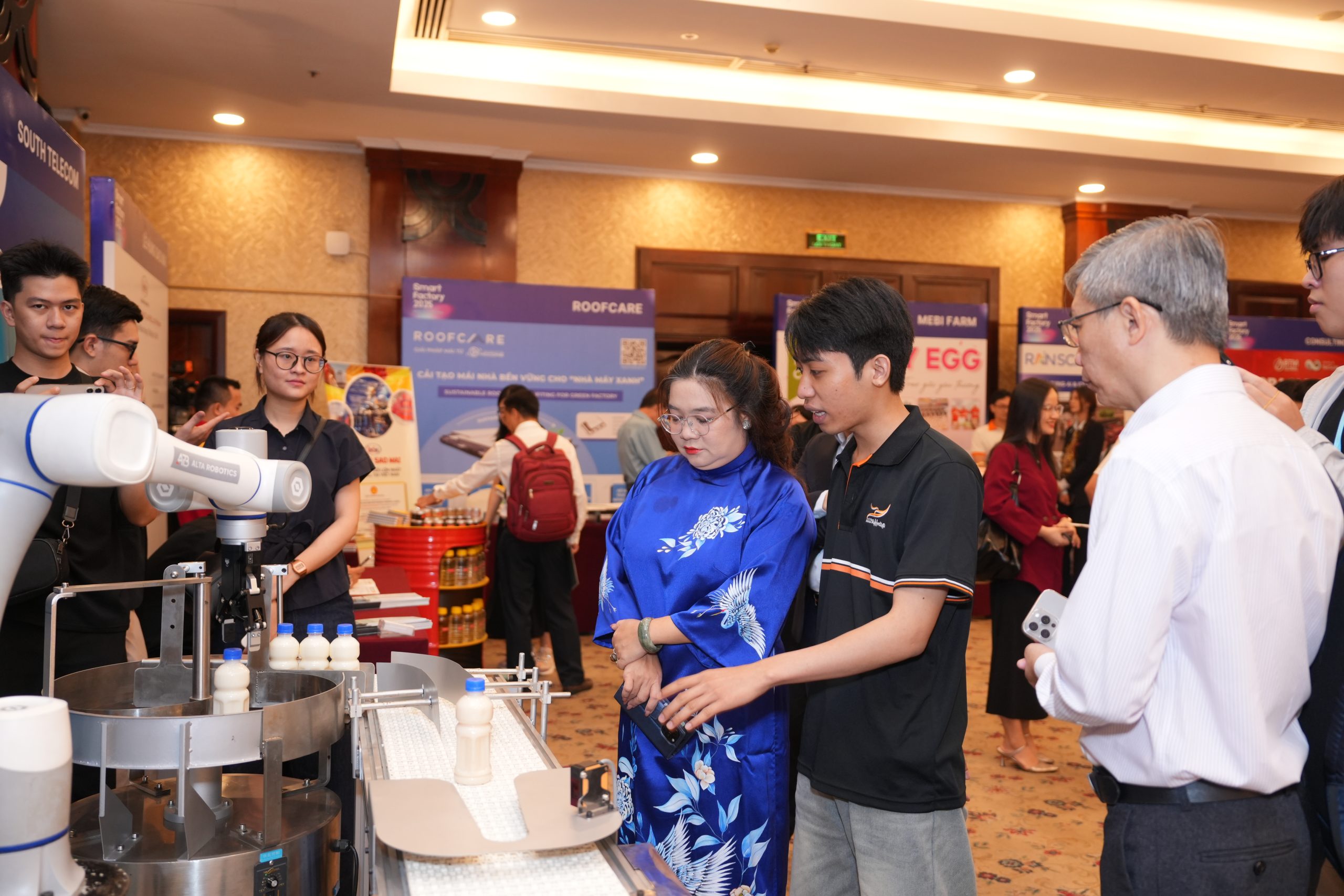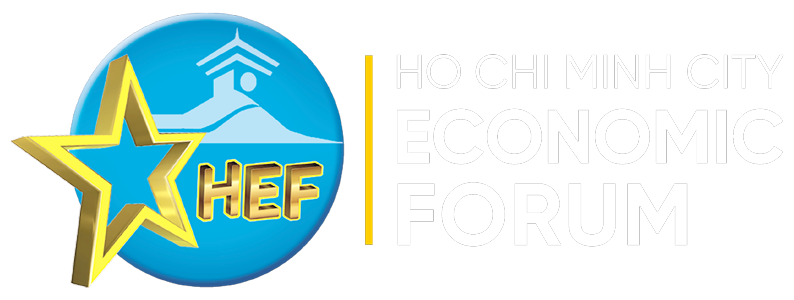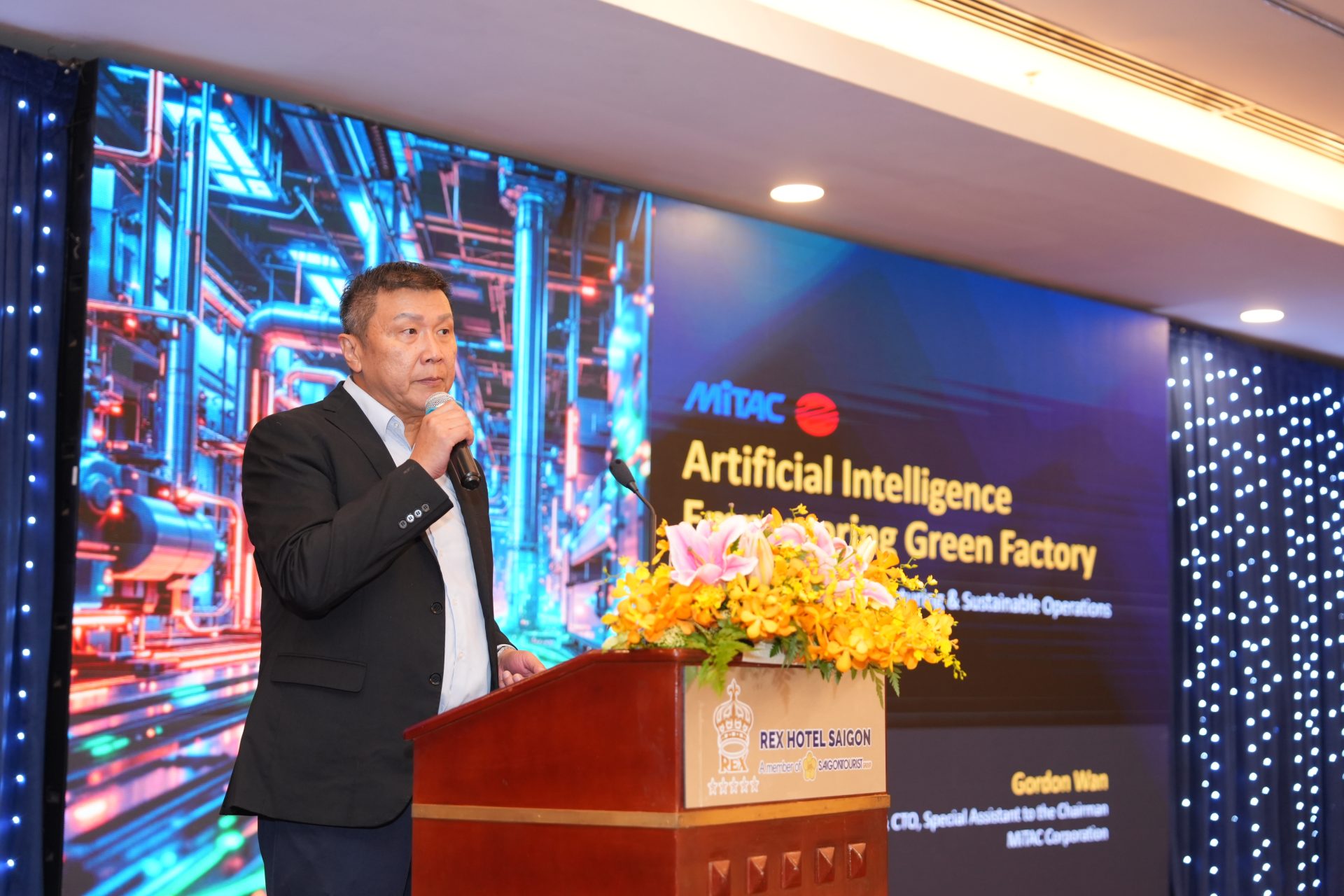On October 22, the HCMC Union of Business Association (HUBA), in collaboration with the Ho Chi Minh City Computer Association (HCA) and the HCMC Center for the Fourth Industrial Revolution (HCMC C4IR), organized a seminar themed “Smart Factory 2025: AI for Green Factory.”
Moving Towards Smart Industrial Zones
Mr. Nguyễn Phước Hưng, Standing Vice Chairman of HUBA, stated that following the expansion of the economic space, the city and its vicinity possess enormous potential: over 43,000 industrial enterprises, accounting for more than 28% of the country’s total; and 90 industrial parks, export processing zones, and high-tech parks, covering nearly 32% of the nation’s total industrial land fund.
This expanded economic space serves as a springboard for forming inter-regional high-tech industrial clusters and fostering smart supply chains. With a planning vision extending to 2050, the city aims to have 105 industrial parks, covering a total area of over 49,000 hectares.
This presents a historic opportunity for the city to redefine its entire industrial structure, shifting development toward high-tech industries with high intellectual and added value content, thereby creating new momentum for more sustainable socio-economic growth. Echoing this view, Mr. Võ Minh Thành, Deputy Director of the City’s Department of Science and Technology, expressed hope that the seminar would contribute significantly to charting a favorable course, encouraging businesses to adopt AI and digital technology to innovate production processes and enhance their competitiveness.
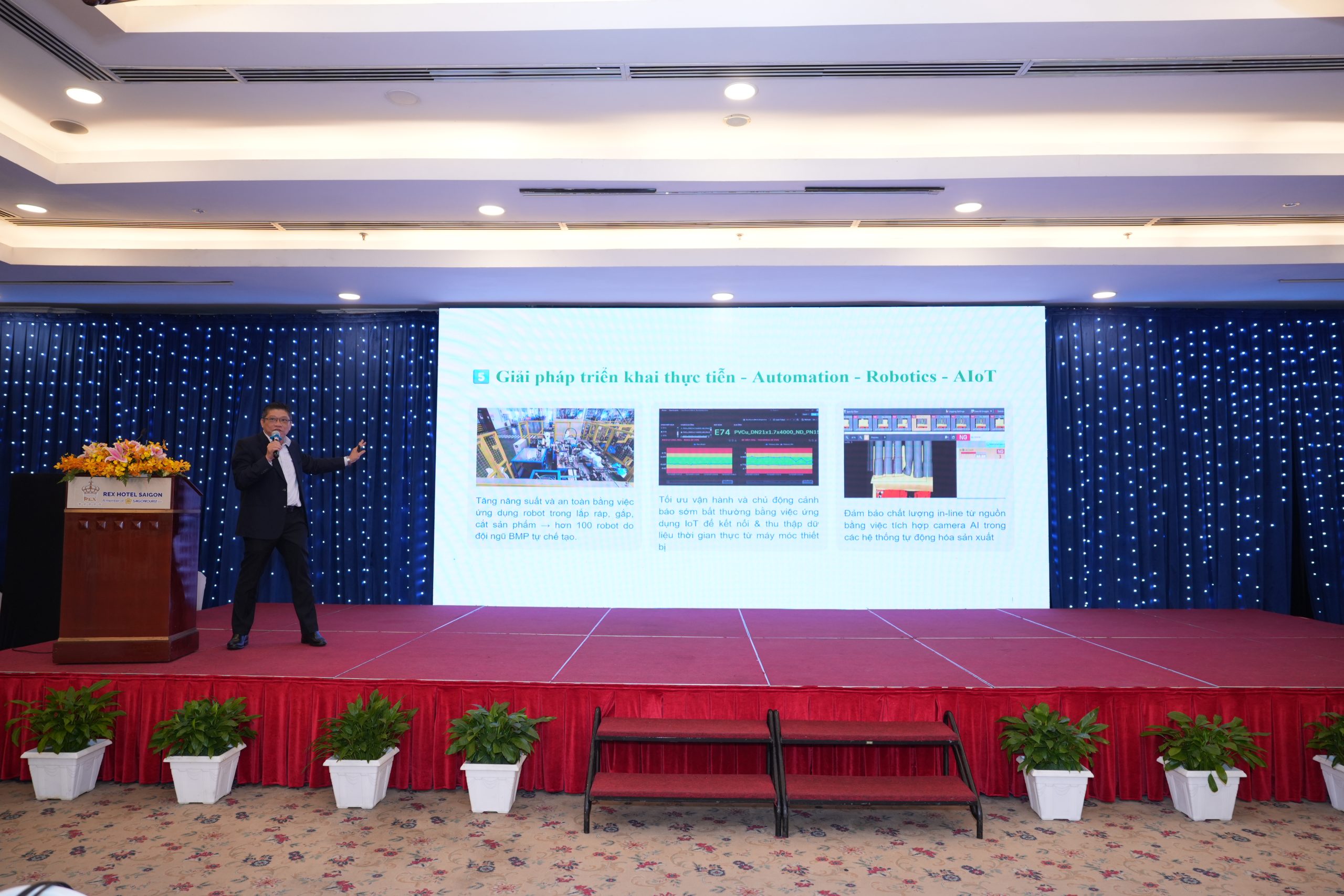
However, great opportunities always come with significant challenges. The city continues to face issues such as unsynchronized connectivity infrastructure, high logistics costs, and low labor productivity and localization rates.
Meanwhile, mounting pressure from automation and international competition is weighing heavily on traditional industrial production models. For this reason, the “Dual Transformation”—simultaneously digitalizing for smart operations and greening for sustainability—is no longer an option, but a mandatory requirement.
‘We must integrate advanced technology into production management and transform traditional industrial parks into smart, ecological models,’ said Mr. Hưng.
However, the majority of small smart manufacturing enterprises in Vietnam generally, and in the city specifically, still face difficulties in accessing and applying AI solutions due to resource limitations. Therefore, HUBA representatives proposed that the city needs to maximize the use of special mechanisms and policies stipulated under Resolution No. 98/2023/QH15 (a major piece of legislation), accelerate administrative procedure reform, and apply a ‘Green Lane’ (expedited/priority process) for strategic projects to help these small smart manufacturing enterprises access and implement AI solutions. Concurrently, there is a demand for breakthrough preferential policies regarding tax, land, and credit for pioneering enterprises.
Lessons for Success
At the seminar, international experts shared a comprehensive overview of certain smart factories and the trends in applying AI in ‘green’ manufacturing. Several domestic businesses shared specific solutions regarding the application of AI in smart management, real-time monitoring, optimizing costs and production operations; automation in smart manufacturing; and the use of AI and the Internet of Things (IoT) in smart factory operations, energy management, smart electricity saving, all aimed at achieving Net Zero by 2050…
According to Ms. Lâm Thúy Ái, CEO of Mebifa Joint Stock Company (in the smart agriculture sector), after making significant investments in automation, AI, digital transformation, and establishing smart farms and factories, the company’s labor productivity has increased by over 30%, costs have decreased by 20%, and the inventory index is almost zero.
Furthermore, thanks to data transparency, the company has achieved important certifications, qualifying it to participate in modern supply chains. The company also implements a circular agricultural economy model, maximizing the utilization of by-products during production for reuse, which reduces costs and increases profits, thereby contributing to the development of a sustainable, green, and environment-friendly agriculture sector.
Ms. Ái stressed that for the successful application of AI and smart manufacturing, the human factor (workforce) is the most crucial element.
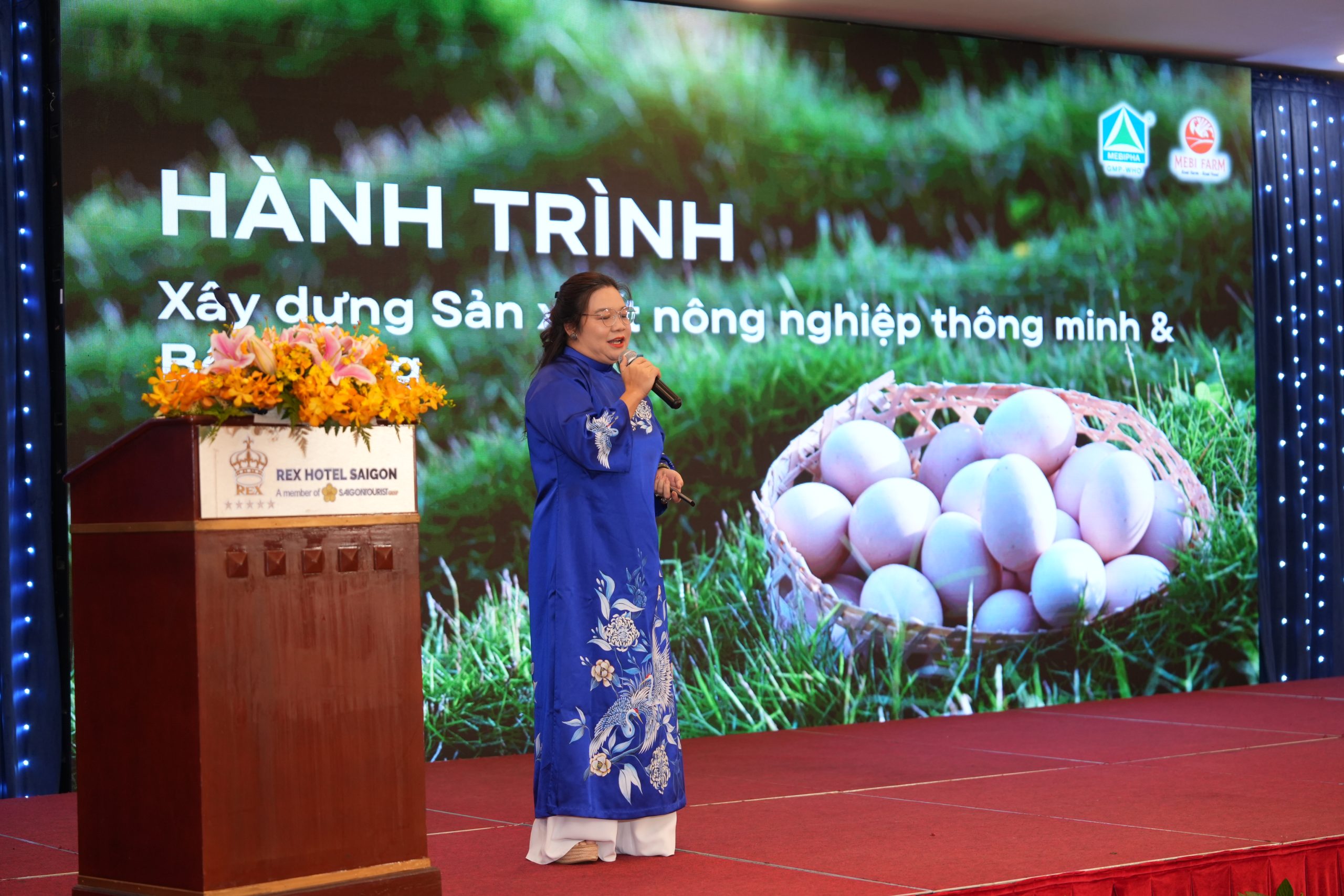
Agreeing with this viewpoint, Mr. Phạm Văn Việt, Chairman of the Board of Directors at Việt Thắng Jean Co., Ltd., also affirmed that the human factor is the most crucial element in the process of applying AI and smart manufacturing.
Over 10 years ago, the Company began utilizing technology for comprehensive automation, spanning from production to sales, and establishing smart factories. Concurrently, it restructured its entire value chain to achieve global green standards. According to Mr. Việt, a smart factory must be built upon a foundation of digital platforms, green data, and clean energy.
Meanwhile, according to Mr. Nguyễn Thanh Quan, Deputy General Director of Bình Minh Plastics Joint Stock Company, Vietnam’s commitment to Net Zero by 2050 compels the company to change amidst unfavorable market fluctuations. Accordingly, the company has identified two key pillars:
The first is automation and digitalization, deploying robots, and applying AI and IoT to boost productivity, optimize costs, and ensure quality.
The second is sustainable development. The company pioneered the use of environmentally friendly additives free of heavy metals for PVCU pipe and fitting production starting in 2017. Most importantly, it integrates ESG (Environmental, Social, and Governance) criteria into its development strategy. ‘Automation makes the factory smarter, while green development makes the enterprise stand out. However, businesses need to build a competent workforce capable of mastering the technology,’ Mr. Quan noted.
